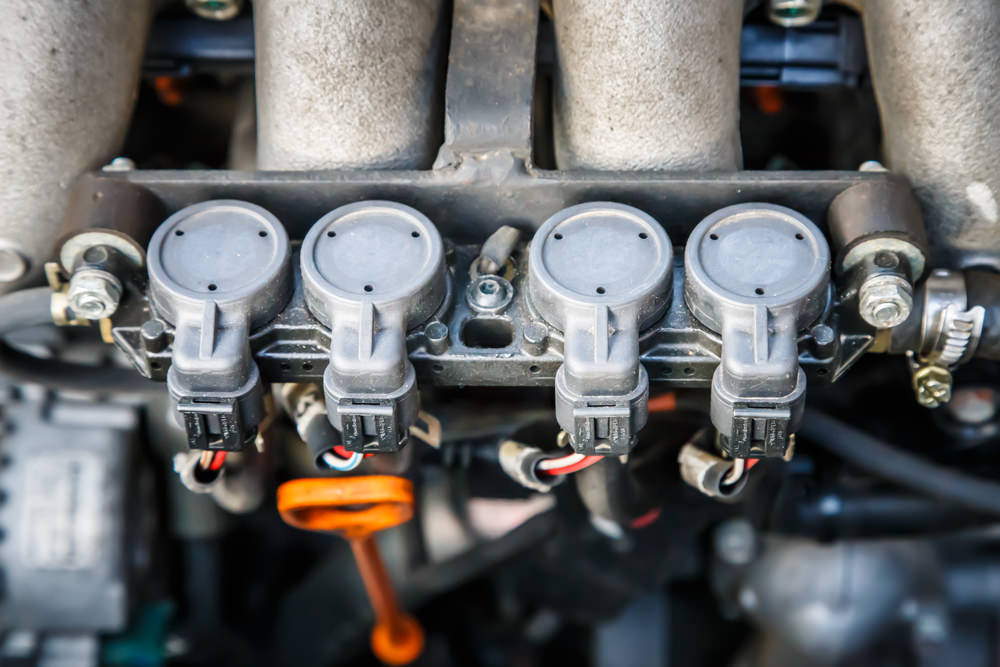

When it comes to engine performance, there are few things more important than fuel delivery. All of the air you can forcefully induce into the cylinders will do nothing without an appropriate amount of fuel to burn. As engines evolved throughout the twentieth century, there came a point where carburetors became the weakest link in the drivetrain in terms of efficiency and dependability. Fuel injection has since become a standard feature in every new vehicle.
Fuel injectors atomize gas, allowing for more even and consistent ignition in the combustion chamber. Unlike carburetors, which rely on the vacuum created by the engine to draw fuel into the cylinders, fuel injection systems precisely deliver a consistent volume of fuel. Modern cars use electronic fuel injection systems that are controlled by the ECU.
The rise of fuel injection was as predictable as the rise in popularity of cars themselves. At the turn of 20th century, it was incredible for a vehicle to travel 60 miles per hour. By the turn of the 21st century, people were groaning at traffic traveling only 60 miles per hour on the highway. Cars today are more dependable and more accommodating to creature comforts and occupant safety than anyone could have imagined a century ago.
What did fuel injection replace?
Fuel injection systems were offered as an upgrade from carburetors when they first came out, and they remained in that role until the 1980s when they started becoming standard equipment on every new vehicle. Fuel injection offers a number of advantages over carburetion, but it was ultimately production cost that killed the carburetor.
For quite a while, carburetors were the simplest and cheapest way for car manufacturers to deliver fuel into the cylinders of their engines. A series of oil shortages in the 1970s forced the government to regulate vehicle fuel economy. Once manufacturers were required to develop more efficient carburetor designs and manufacture more complex parts, the cost of producing carbureted vehicles was great enough that fuel injection became the more cost-effective solution.
For consumers, this was actually great news. Fuel injected vehicles drive more consistently and required servicing and tuning significantly less often. Emissions are easier to control as well, and fuel economy is boosted with more efficient fuel delivery. There are a number of different fuel injection systems out there, but they can all be sorted into two categories: mechanical fuel injection and electronic fuel injection.
Electronic fuel injection (EFI)
Electronic fuel injection allows for extremely precise control over how much fuel is sprayed into the cylinders. It follows a fairly straightforward process to do so:
The fuel exits the fuel tank via the fuel pump. It travels through fuel lines towards the engine.
The fuel pressure regulator constricts the flow of fuel and only lets a calculated amount through to the injectors.
The fuel pressure regulator knows how much fuel to let through to the injectors via a signal from the mass airflow sensor (MAF). This sensor tracks how much air is entering the engine at any given time. The overall volume of air entering the engine along with the optimal air/fuel ratio decided by the manufacturer gives the electronic control unit (ECU) enough information to calculate the exact amount of fuel the engine needs.
The fuel injectors themselves open to let the atomized gas directly into the combustion chamber or into a throttle body.
Mechanical fuel injection
Mechanical fuel injection was developed before EFI and paved the way for EFI technology to be developed. The main difference between the two systems is that mechanical fuel injection systems use mechanical devices to meter the correct amount of fuel into the engine. These systems have to be tuned for optimal performance, like carburetors, but also deliver fuel via injectors.
Aside from being more precise, these systems weren’t a massive departure from their carburetor counterparts. They were, however, extremely useful for aircraft engines. Carburetors do not work well against gravity. To deal with the g-forces dealt out by aircraft, fuel injection was developed. Without fuel injection, fuel starvation would have stalled many aircraft engines during tricky maneuvers.
Fuel injection of the future
Going forward, fuel injection will become more and more precise and offer increasing efficiency and safety. Each year engines have more horsepower and produce less waste per horsepower.



